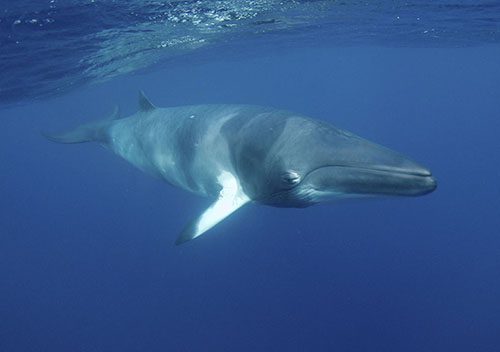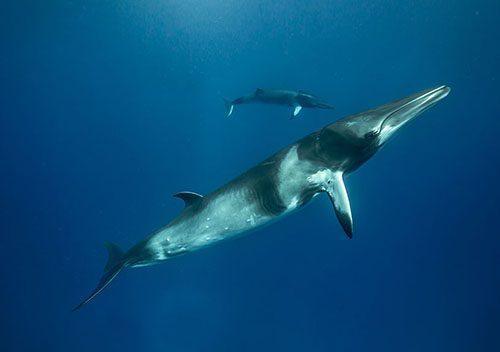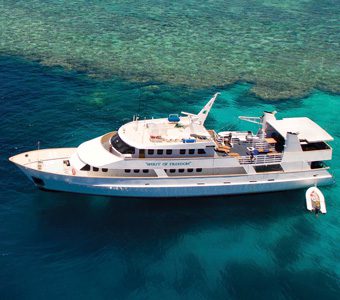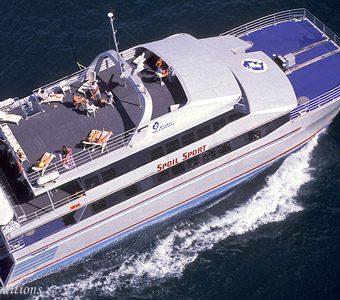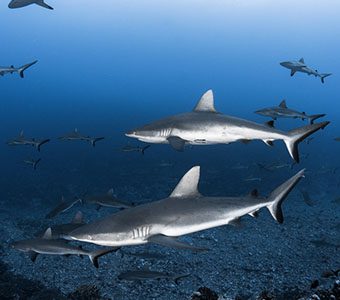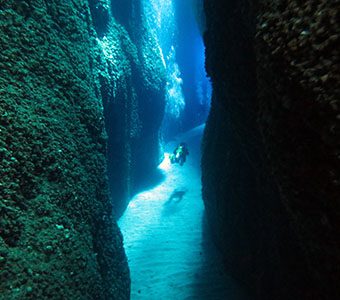Each Australian winter, the Great Barrier Reef plays host to some very special visitors. In fact, it’s the only place in the world where you can don mask and snorkel in warm tropical water, and swim with dwarf minke whales.
An encounter with one of these gentle giants is a life-changing moment, a moment you’ll remember for years to come, each time you recall it, feeling the same raw excitement and emotion you felt the first time.
My first minke whale encounter was on my birthday last year, and I remember it like it was this morning. After steaming north overnight from Cairns, I’m up bright and early as we arrive at Lighthouse Bommie and the skipper tells me they’ve spotted at least 10 whales. It’s a hushed atmosphere as we quietly wait for our first sighting. And then they’re here. One, two – maybe six minkes. Some appearing and disappearing quickly, nothing more than a brilliant flash of white. And they gradually become bolder, swim closer, until they are cruising by at eye level.
If there’s a more humbling experience than staring into the eye of a five-tonne mammal on the world’s most famous reef, I’ve yet to find it.
A special moment for me was an encounter with a mum and bub. It was simply magical to watch them, the calf playing and nuzzling its mum as she guides and protects her baby.
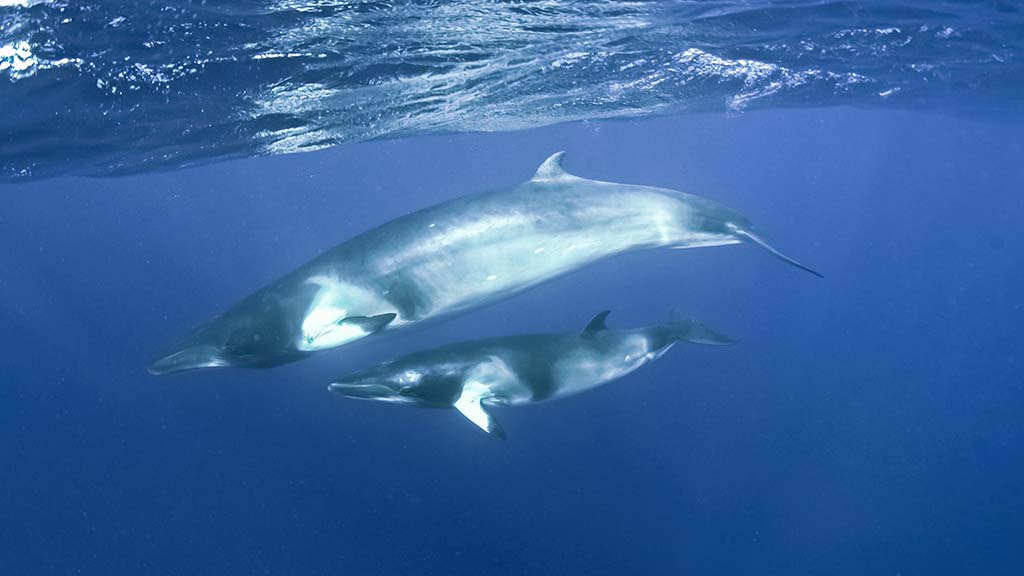
By the time I drag myself in for breakfast, I’m shivering with excitement, babbling to anyone that will listen, my fingers resembling prunes as I try to scroll through the hundreds of photos I’ve managed to take.
Dwarf minke whales visit the northern Great Barrier Reef in June and July each year, forming the only known predictable aggregation of these whales in the world. The extroverts of the whale family, they are incredibly inquisitive and often approach boats and snorkelers, sometimes interacting for extended periods.

The second smallest member of the baleen whale family, growing up to eight metres long, they are only found in the Southern Hemisphere, spending the summer months feeding in sub-Antarctic waters and migrating to the warm waters of the Great Barrier Reef over winter to breed and give birth.
While dwarf minke whales can be seen almost anywhere on the Great Barrier Reef over winter, they are most frequently seen in the north on the Ribbon Reefs, sometimes visiting the Agincourt Ribbon Reefs accessible on a day tour from Port Douglas.
Safe encounters… for minkes and divers
A code of practice is in place to manage safety for both divers and whales, providing the maximum opportunity to see whales at very close range while ensuring the whales interact on their terms. Most diver and whale interactions occur while snorkelling.
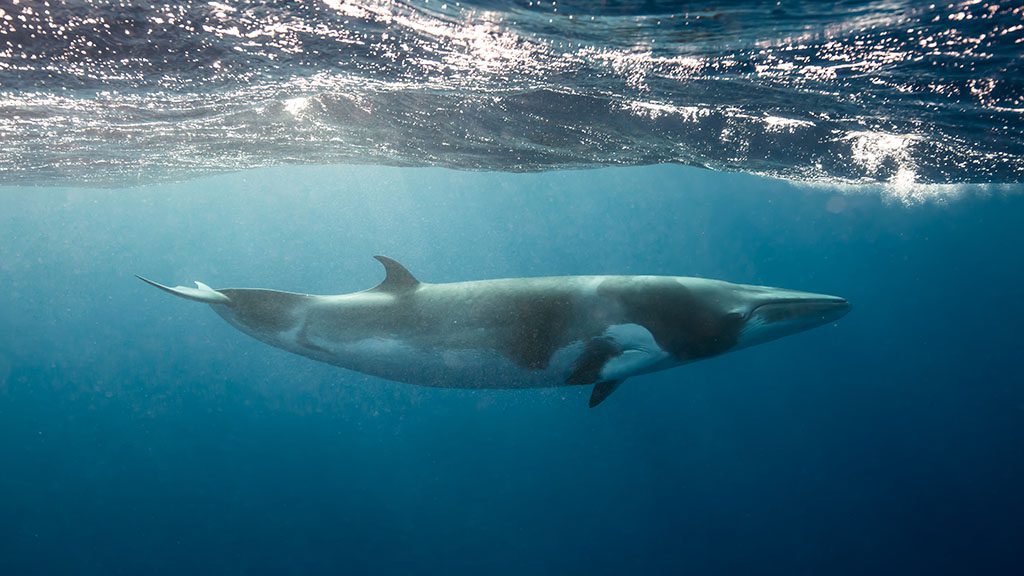
The voluntary approach to the vessel (and swimmers) by minke whales creates a unique in-water experience. Abiding by these codes, a maximum of two surface ropes are placed in the water with swimmers then positioned 3-4 metres apart for a safe encounter. The whales actually control the encounter in that they decide how close they interact.
Dwarf minkes are highly inquisitive and often approach snorkellers and divers to within close distances, sometimes interacting for extended periods. Close approaches (within 3m) occur occasionally and are more likely to happen when snorkellers are stationary in the water, holding onto a rope, remaining relatively still and calm.

Very close approaches of 1m or less are rare, but have been experienced, usually in longer encounters where the whales’ confidence has increased, possibly due to the predictability of swimmers’ movements.
The Minke Whale Project
Great Barrier Reef tour operators that offer dwarf minke whale expeditions contribute to scientific research into these enigmatic creatures, and guests are invited to participate.
Based at James Cook University, the Minke Whale Project conducts multi-disciplinary research into dwarf minke whale biology and behaviour, the social and economic values of the whales and the sustainable management of swim-with-whales tourism.
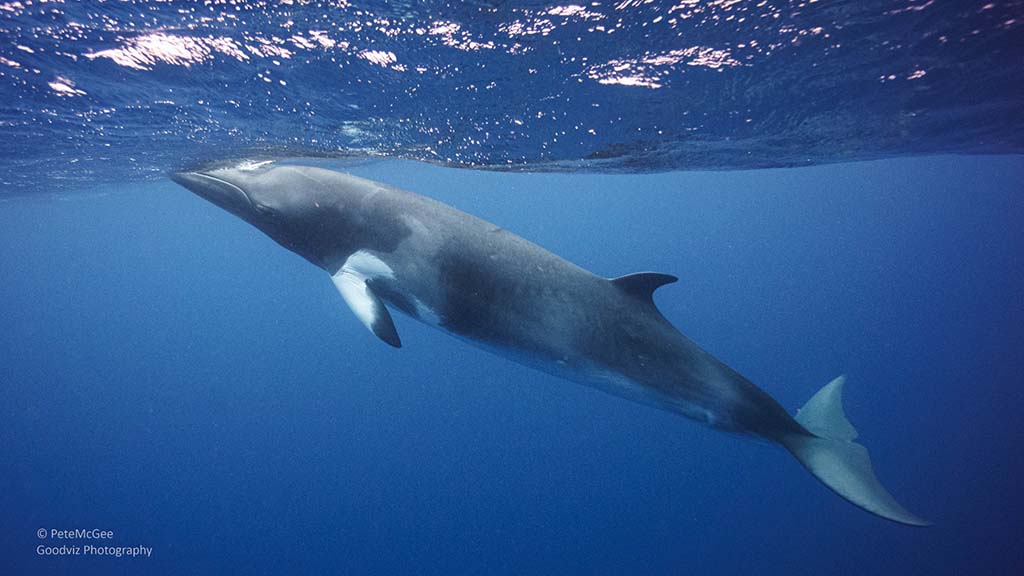
With assistance from charter boats like Mike Ball’s Spoilsport and Spirit of Freedom, the project has been on-going for almost 30 years and has started to shed a little light on these mysterious cetaceans. Both operators host volunteer minke whale researchers on each minke whale expedition, and guests are encouraged to assist the research by using data collection forms to record whale observations and by sharing their photos to the database.
Research is continuing to define the exact species of dwarf minke whale that visits the Great Barrier Reef. There are two known species, the North Atlantic minke whale and the slightly larger Antarctic minke whale. It is thought that the Great Barrier Reef dwarf minke whale is related to the North Atlantic minke or is an unnamed species.
Ongoing research aims to map migratory paths, identifying critical habitat and potential feeding grounds and identify risks and threats beyond the protected waters of the Great Barrier Reef.

